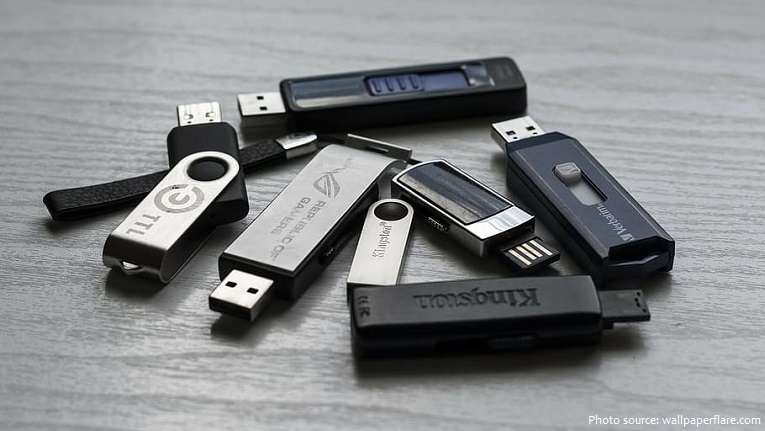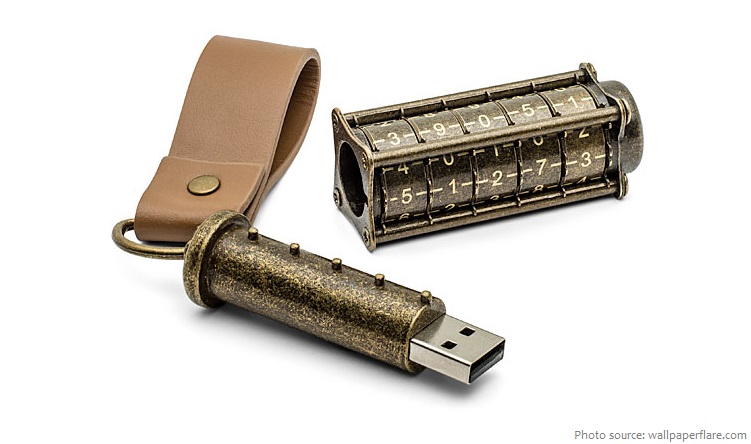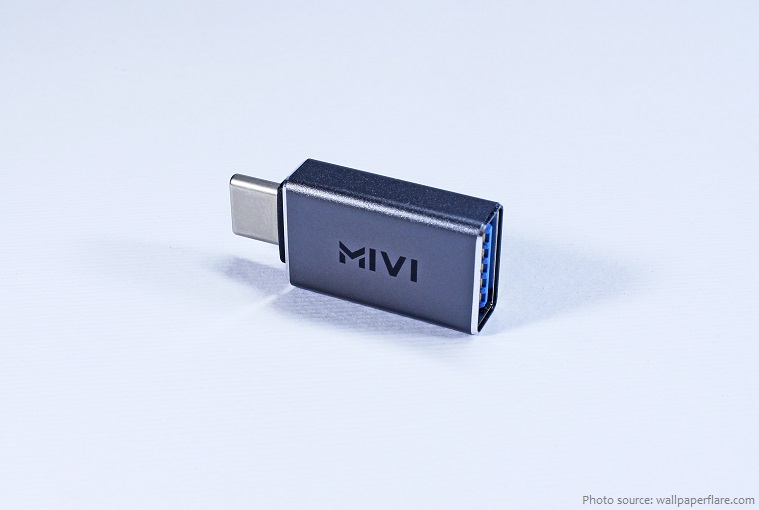
A USB flash drive is a data storage device that includes flash memory with an integrated USB interface.
It is a popular way to store digital information and an easy way to share data.
It has many nicknames – ‘pocket drive’, ‘memory stick’, ‘jump drive’ and a myriad of other names created by avid computer users.
Most people are familiar with USB flash drives. In fact, almost 6 out of 10 US consumers surveyed in a recent study by the Advertising Speciality Institute report owning at least one branded USB stick, and this is really no wonder since they make for a highly affordable giveaway item or gift that will generate a whopping average of 700 views in their lifetime.

Most weigh less than 30 g (1 oz).
The first flash drive started out at 128 megabytes (MB) and was priced around $30 each.
The memory in flash drives was commonly engineered with multi-level cell (MLC) based memory that is good for around 3,000-5,000 program-erase cycles. Nowadays Triple-level Cell (TLC) is also often used, which has up to 500 write cycles per physical sector, while some high-end flash drives have single-level cell (SLC) based memory that is good for around 30,000 writes. There is virtually no limit to the number of reads from such flash memory, so a well-worn USB drive may be write-protected to help ensure the life of individual cells.

Flash memory was invented by Doctor Masuoka while working for Toshiba in the 80’s. The name “flash” was suggested by one of the doctor’s assistants, because the erasure process of the memory contents reminded him of a flash of a camera. The product was first shown at an International conference in San Francisco. Intel immediately saw the massive potential of this new invention and introduced the first commercial NOR type flash chip in 1988. Compact Flash was originally based on this type of flash chip, although later on manufactures’ moved to the less expensive NAND flash.
USB 1.0 was introduced in 1995 by a working group of computer companies including Intel, Compaq, Microsoft and IBM. Their intent was to standardize the numerous specialized connectors PCs had at the time and to develop a basic device-connection protocol. The first USB product was released in 1996, and by 1998 the standard had been widely adopted. In 2000 the USB 2.0 standard was released. The second generation of USB had a much faster data-transfer speed.

IBM sold the earliest 8MB version in 2001 under the product name ‘Memory Key’, and it quickly followed with a 16MB version, and by 2003, they were manufacturing a 64MB version. Remember, this is megabyte not gigabyte as we’re used to at the moment!
EE Times states in Dov Moran’s profile that 51 million USB flash drives were sold in 2004, clearly indicating the quick spread and acceptance of the combining of two technologies. Since the device uses flash memory, it does not require power to retain its data. This allows USB flash drives to be stored and used for important documents and backup.
By 2010, the maximum available storage capacity for the devices had reached upwards of 128 GB. USB 3.0 was slow to appear in laptops. Through 2010, the majority of laptop models still contained only USB 2.0.

In 2010, Verbatim launched its Tuff-“N”-Tiny line, only two millimeters thick. Although the contacts are exposed, the units are water and dust proof.
In January 2013, tech company Kingston, released a flash drive with 1 TB of storage. The first USB 3.1 type-C flash drives, with read/write speeds of around 530 MB/s, were announced in March 2015. By July 2016, flash drives with 8 to 256 GB capacity were sold more frequently than those with capacities between 512 GB and 1 TB.
In 2015, on the go USB flash drives OTG (On The Go) USB’s, for smartphones, are released. These are available as Type A, Type B, Type C and even some as Lightening Cables. This allows mobile devices to connect directly to supported devices.

According to a stat in 2015, there were over two billion USB 3.0 devices on the market.
In 2017, the announcement and release of 2Tb drives have been made. Although almost twice as thick as a standard USB Drive, with 3.1 Generation, these are capable of containing 34,000 hours of music, 1,000 hours of video or 32,000 pictures.
USB4 was first announced officially in March 2019. At time of publication of version 1.0, promoter companies having employees that participated in the USB4 Specification technical work group were: Apple Inc., Hewlett-Packard, Intel, Microsoft, Renesas Electronics, STMicroelectronics, and Texas Instruments.